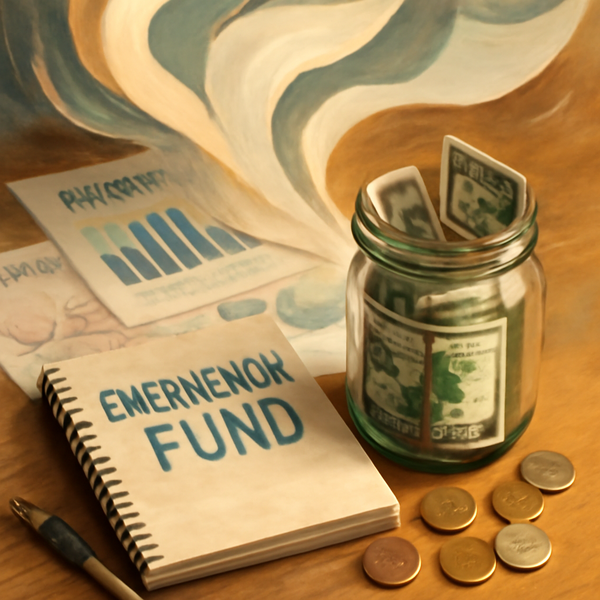
Understanding the importance of an emergency fund is paramount for financial security. In today's unpredictable world, unforeseen circumstances like job loss, unexpected medical bills, or urgent home repairs can strike at any time, leaving individuals in a precarious financial position. A well-established emergency fund acts as a vital buffer, preventing you from derailing your long-term financial goals or resorting to high-interest debt when life throws its curveballs. It provides peace of mind, knowing you have readily accessible cash to cover essential living expenses during difficult periods, thereby safeguarding your financial stability.
Why Building an Emergency Fund is Non-Negotiable
Building an emergency fund is not merely a suggestion; it's a fundamental pillar of sound financial planning. Life is inherently unpredictable, and relying solely on credit cards or personal loans for unexpected expenses can quickly lead to a spiral of debt. An emergency fund offers a secure alternative, providing a cushion against financial shocks. The primary benefit is the ability to cover essential living costs, such as rent or mortgage payments, utilities, groceries, and transportation, without compromising your ability to meet these obligations. This prevents the need to sell assets at unfavorable times or to take on predatory loans that carry exorbitant interest rates. Furthermore, having an emergency fund empowers you to maintain your lifestyle and avoid drastic cutbacks during challenging times. It allows you to remain focused on your career and personal well-being, rather than being consumed by financial anxieties. The psychological benefit of knowing you have a safety net cannot be overstated; it reduces stress and promotes a sense of control over your financial future, allowing for clearer decision-making when facing adversity.
How Much Should You Aim For?
Determining the appropriate size of your emergency fund is a critical step in ensuring its effectiveness. While there's no one-size-fits-all answer, a commonly recommended guideline is to save three to six months' worth of essential living expenses. This range provides a robust buffer for most unforeseen events. To calculate your target amount, meticulously track your monthly expenditures for necessities like housing, food, transportation, insurance premiums, and minimum debt payments. Once you have a clear picture of your essential monthly outflow, multiply that figure by three and then by six to establish your ideal savings range. It's also important to consider your individual circumstances. If you have a less stable income, dependents, or significant health concerns, aiming for the higher end of the spectrum, perhaps six to twelve months, might be more prudent. Conversely, if you have a very stable job and minimal dependents, three months might suffice as a starting point. Regularly reviewing and adjusting your emergency fund as your income, expenses, and life circumstances change is also vital to ensure it remains adequate for your needs.
Strategic Ways to Build Your Emergency Fund
The journey to establishing a robust emergency fund requires a strategic and consistent approach. One of the most effective methods is to automate your savings. Set up automatic transfers from your checking account to a dedicated high-yield savings account each payday. Treating these transfers as a non-negotiable expense, much like your rent or mortgage, ensures regular contributions. Additionally, look for opportunities to trim unnecessary expenses from your budget. Even small reductions in discretionary spending, such as dining out less frequently or cutting back on subscriptions, can free up extra cash to allocate towards your emergency fund. Consider dedicating any unexpected windfalls, like tax refunds, bonuses, or gifts, directly to your savings goal. Selling unused items around your home can also provide a quick influx of cash. The key is to be disciplined and persistent. It’s crucial to keep this fund separate from your regular checking account to avoid the temptation of dipping into it for non-emergencies. A separate, easily accessible savings account is ideal.
The Long-Term Benefits of an Emergency Fund
Beyond immediate protection, a well-funded emergency stash offers significant long-term advantages that contribute to overall financial well-being and stability. By having a readily available sum for unexpected events, you drastically reduce the likelihood of accumulating high-interest debt, such as credit card balances or personal loans, which can severely hinder your progress towards larger financial goals like retirement or homeownership. This avoidance of debt preserves your capital, allowing it to grow through investments rather than being eroded by interest payments. Furthermore, the psychological security provided by an emergency fund translates into reduced stress and anxiety, fostering better decision-making and a more positive outlook on your financial future. This sense of security can empower you to take calculated risks, such as pursuing further education or starting a business, knowing that a safety net exists to mitigate potential setbacks. Ultimately, an emergency fund is an investment in your resilience, providing the financial flexibility and peace of mind necessary to navigate life's uncertainties with confidence and to remain on track with your long-term financial aspirations.
Emergency Funds vs. Other Savings Goals
It's important to distinguish an emergency fund from other savings goals, as they serve distinct purposes and require different accessibility levels. While saving for a down payment on a house, a vacation, or a new car are all valuable financial objectives, they are typically considered “sinking funds” or “goal-specific savings.” These funds are generally earmarked for future planned purchases and might be invested in slightly longer-term vehicles that could offer higher returns but carry more risk or less immediate liquidity. An emergency fund, on the other hand, is designed for immediate, unplanned needs. Its primary characteristic is accessibility and safety, not maximizing returns. Therefore, it should be held in a highly liquid account, such as a traditional savings account or a money market account, where the funds can be withdrawn quickly without penalty. The purpose is to have cash readily available within 24-48 hours. Prioritizing the establishment of a sufficient emergency fund before aggressively pursuing other, less critical savings goals is a foundational principle of personal finance. It ensures that life's inevitable surprises don't force you to derail your progress on other important financial aspirations.